MARIANI’S
Virtual Gourmet
December 15,
2019
NEWSLETTER
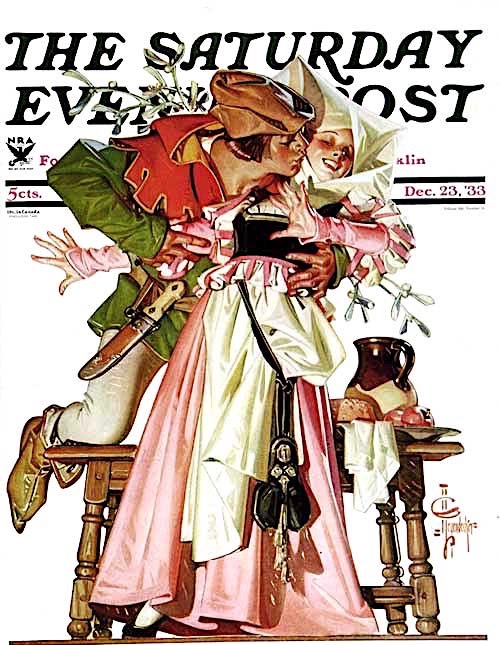
❖❖❖
IN THIS ISSUE
EATING AROUND VENICE
By Geoff Kalish
NEW YORK CORNER
LAUT SINGAPURA
By John Mariani
NOTES FROM THE WINE CELLAR
ARE WINE TASTINGS A FARCE?
By John Mariani
❖❖❖
EATING AROUND VENICE
By Geoff Kalish
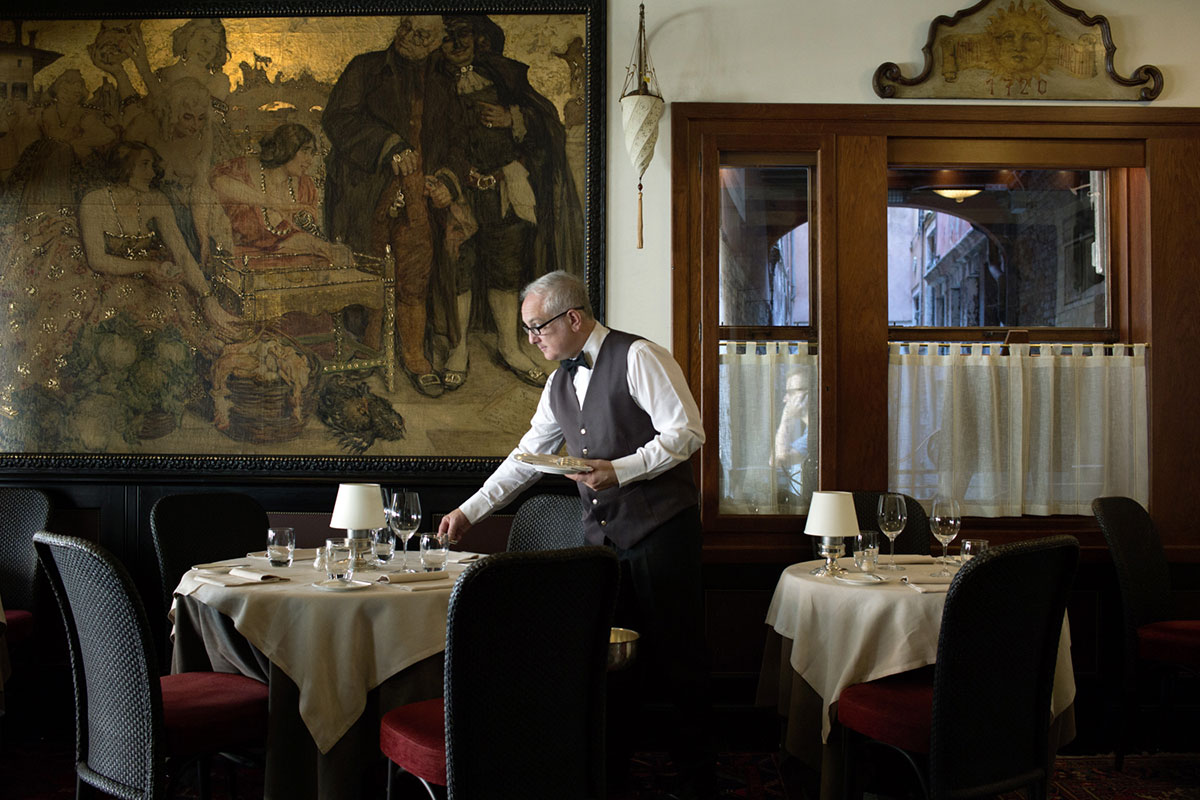
Venice has been
at the mercy of the water gods since it was
built, and last month La Serenissima was flooded
yet again with abnormally high tides. But
that was last month, and despite some chronic
power outages, Venetian restaurateurs are back
in swing, setting the tables with linens,
lighting candles and turning out the food they
always have.
Opinions about Venice often vary widely.
After a visit some feel that it’s an overcrowded
Renaissance relic, lined with dirty, smelly canals
and shops selling “made in China” glass trinkets
at wildly inflated prices and offering a few
crowded museums with poorly displayed
artwork.
Others, however, promise to return as soon
as possible, deeming it an enchanting gem of a
city, with romantic gondola rides in its canals
and numerous shops selling well-priced, hand-blown
Murano glass, as well as museums housing some of
the greatest paintings in the world.
And
then
there’s different opinions on the food—some
finding the prices outrageous and the ubiquitous
black pasta salty and disgusting, while others
feel the quality and service at other than
well-known “tourist
trap” restaurants warrant the price and can’t wait
to dine  on another
dish of pasta or risotto with seppia nero
(cuttlefish and their ink).
on another
dish of pasta or risotto with seppia nero
(cuttlefish and their ink).
I’m one of those who consider the city
magical and find that with a bit of planning
visitors (especially those interested in art) can
rather easily view great works without being
mobbed by other tourists and dine on top-notch
fare at a reasonable price, especially when
considering that the raw ingredients for
everything served need to be delivered from the
mainland. So, based on a number of visits to
Venice, one very recently, the following are some
tips on touring and dining in the city.
First,
if
you’re planning to visit the very popular Gothic
Doge Palace and/or its museum, the morning is not
the time to go, with day trippers lining up for
entrance seemingly before sunrise. However, at 4
p.m. on a recent afternoon we entered with only a
five-minute wait. Two morning alternatives are a vaporetto
(public water bus) ride to Murano (35 minutes from
St. Marks or 10 minutes from Fondamente Nove on
the north side of the city), where you can visit
numerous showrooms as well as factories and are
usually able to observe artisans at work blowing
glass. Or you might consider the under-visited
Accademia Gallery that features pre-19th century
Venetian art and is loaded with works by Bosch,
Bellini, Tintoretto, Titian and Veronese, easily
reached by walking from St. Mark’s Square by
following the signs on the walls. And then there’s
the usually uncrowded 14th century Church of
Madonna dell’Orto housing a number of Tintoretto
masterpieces, like
the magnificent Adoration of
the Golden Calf (above) and The
Presentation of the Virgin in the Temple in
Canneriggio, a 30-minute walk or 10-minute vaporetto
ride from St. Mark’s.
As to dining, the best advice is to use a
reputable guidebook or review in a known
publication, and if possible make reservations in
advance. Also avoid restaurants with people
outside urging you to enter or those that have
pictures of the food posted by the doorway. That
said, the following establishments have
long-standing reputations for excellence and serve
sensibly priced food and wine.
VAT tax of 20% and service are included in
the bill. There is no need to tip further.
De Pisis
Bauer
Palazzo Hotel
39-041-520-7022
Located
on
the ground floor of the elegantly updated Bauer
Palazzo hotel, this restaurant offers
sophisticated fare in a magnificent outdoor (or
plush indoor) setting—looking out at the Grand
Canal and the oft-painted 17th century Church of
Santa Maria della Salute (think Canaletto, Turner,
Sargent and Monet).
While the printed menu is not as
encyclopedic as those at many upscale Venetian
eateries, it has a range of both Venetian and
regional Italian dishes, from tartare of beef
Piemontese and gnocchi with Gorgonzola to a mix of
fried fish and calf’s liver made with sweet and
sour onions and a sauce of reduced vin santo.
There are always a number of daily specials.
For starters we chose lightly grilled
vegetables enlivened by a sprinkle of good
balsamic and olive oil, and a classic seafood
risotto in broth bursting with Mediterranean
flavors. For a main course we both chose specials
of perfectly grilled John Dory, its skin crisp and
its delicate flesh moist with a slightly sweet
taste; this was served with a simple arugula
salad. We accompanied the meal with a bottle of
easy drinking 2016 Masi Campoforin Amarone that
had ripe, plummy flavors more like a ripasso than
an
Amarone, and concluded with a not-to-be missed
order of decadent profiteroles, garnished with a
rich, thick chocolate sauce.
The
restaurant is open daily for lunch and dinner.
Expect dinner for two to cost $140-$150, not
including wine.
Antico
Martini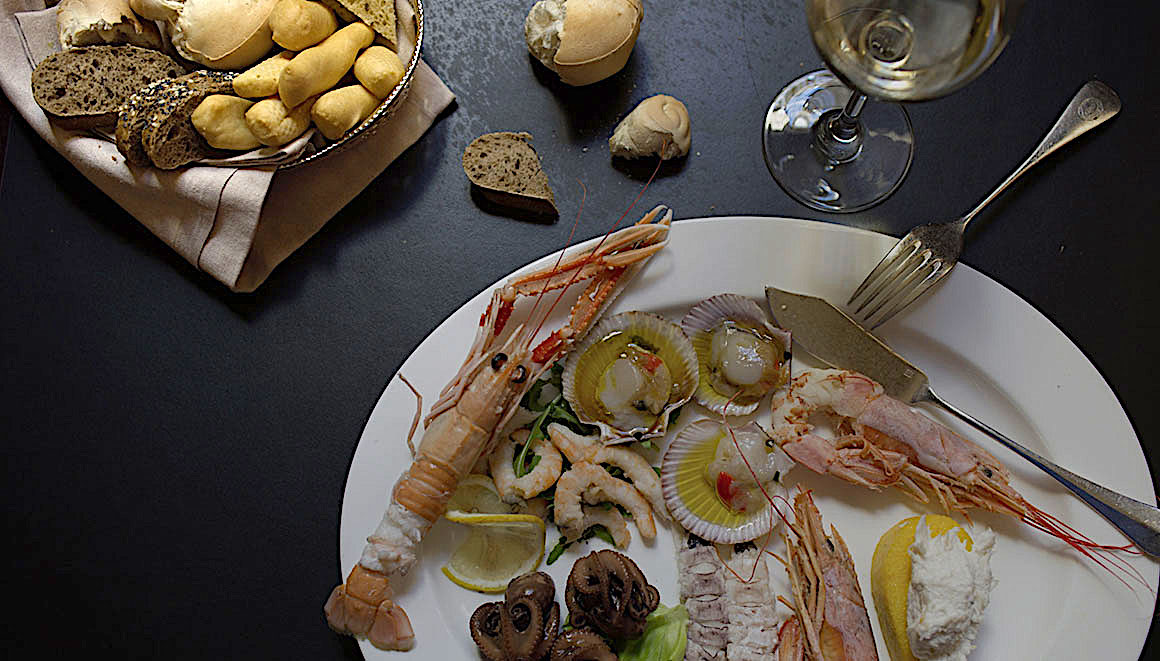
Campo
Teatro Fenice
39-041-5224121
Just
across from La Fenice opera house, this
establishment has been serving food and wine for
over a century. In fact, it began as a coffeehouse
in 1720, two years before La Fenice opened. In
1922 a new owner, from Chianti, transformed it
into an elegant ristorante,
but during the war the premises were requisitioned
by the Germans. When the Americans occupied
Venice, a piano was brought in for carousing and
it is still at the restaurant. It re-opened in
1952 and, being across from La Fenice, drew a
jet set clientele that included Igor Stravinsky,
Arthur Rubinstein, Anna Moffo, Jean Cocteau,
Laurence Olivier, Esther Williams and Peggy
Guggenheim. Ten years ago a Venetian businessman
named Lino Lando bought the place and brought the
furnishings back to their original condition.
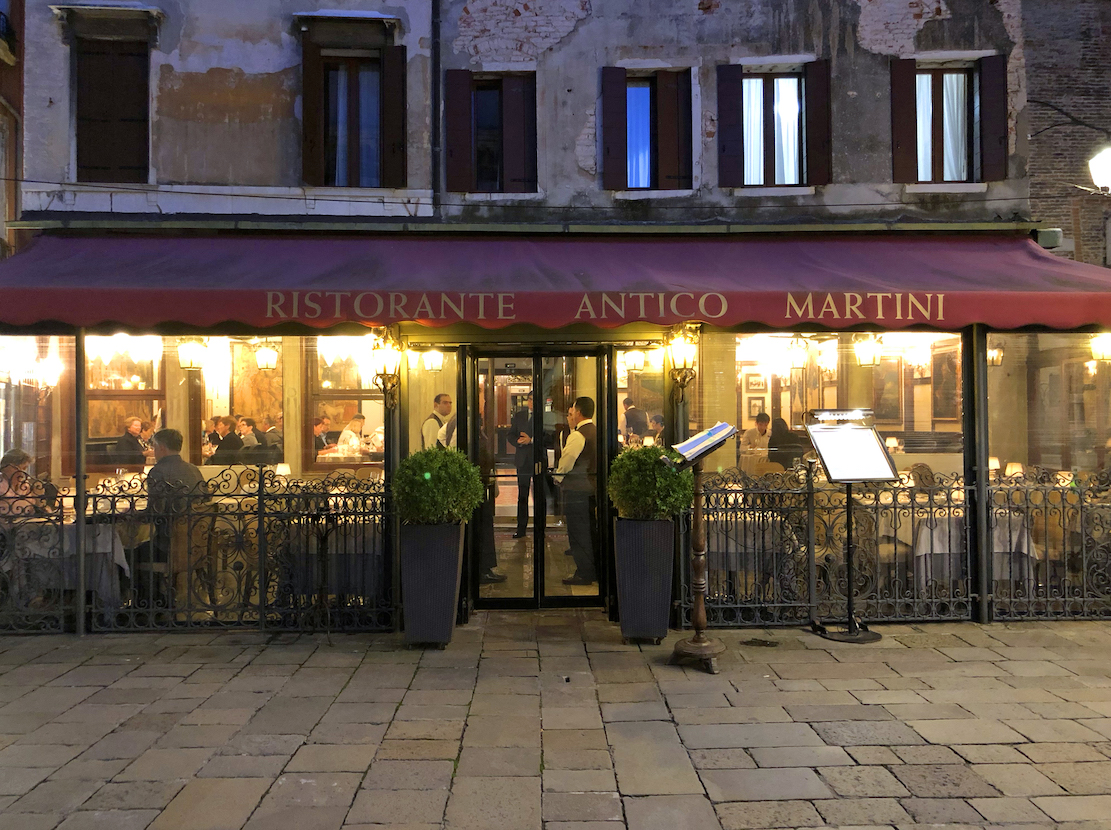 In warmer weather,
seating outside is on a terrace under a large
awning or inside in a room with luxurious
chandeliers, draperies and well-spaced
pink-clothed tables. In either space formally
dressed servers provide prompt, professional
service. The very expensive menu offers a wide
range of choices, from shellfish Catalana style to
three tastings of pâté de foie gras with pepper,
ginger and orange, branzino-stuffed ravioli with
ratatouille and spaghetti alla busara
with scampi.
In warmer weather,
seating outside is on a terrace under a large
awning or inside in a room with luxurious
chandeliers, draperies and well-spaced
pink-clothed tables. In either space formally
dressed servers provide prompt, professional
service. The very expensive menu offers a wide
range of choices, from shellfish Catalana style to
three tastings of pâté de foie gras with pepper,
ginger and orange, branzino-stuffed ravioli with
ratatouille and spaghetti alla busara
with scampi.
Next we enjoyed a memorable special of
risotto studded with a mix of perfectly cooked
seafood and fresh asparagus (served for two
people). We accompanied the meal with a 2014 Massi
Campofiorin that showed full flavors of ripe plums
and cherries and hints of chocolate in its finish
and we concluded with a lemony custard served with
a raspberry sauce and fresh raspberries.
Open daily 11:30 a.m. – 11:30 p.mm. Expect
dinner for two to cost $170-$180, not including
wine.
Alle
Corone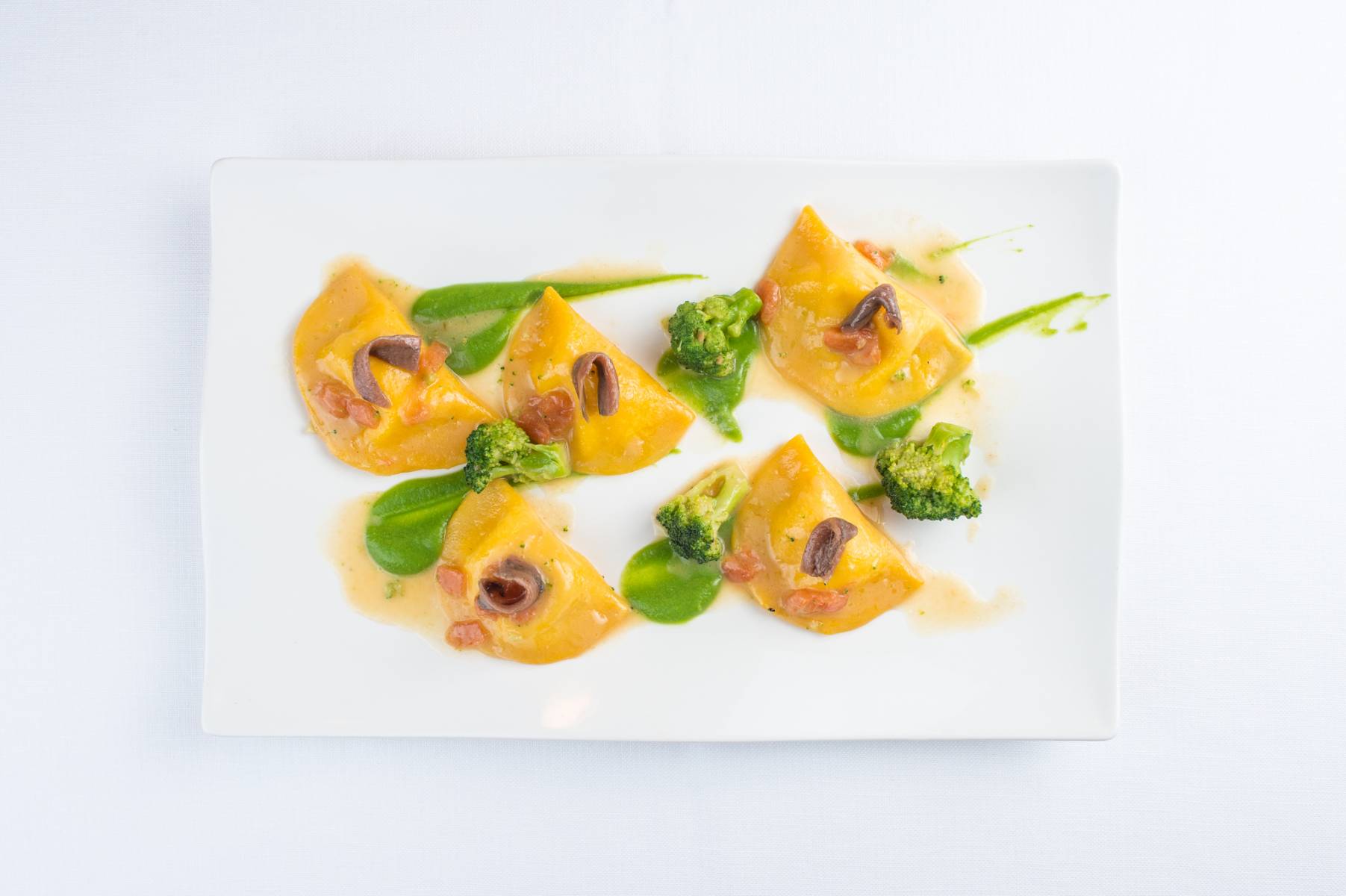
Calle
de la Fava
39-041-523-2222
Situated
on
the ground floor of the Ai Reali Hotel, a restored
17th century Palace along a canal near the Rialto
Bridge, this elegant restaurant’s windows look out
at gondoliers at work ferrying tourists. Alle
Corone offers
a number of seasonally changing tasting menus as
well as à la carte items prepared under the
supervision of skilled chef Mauro Cautiello.
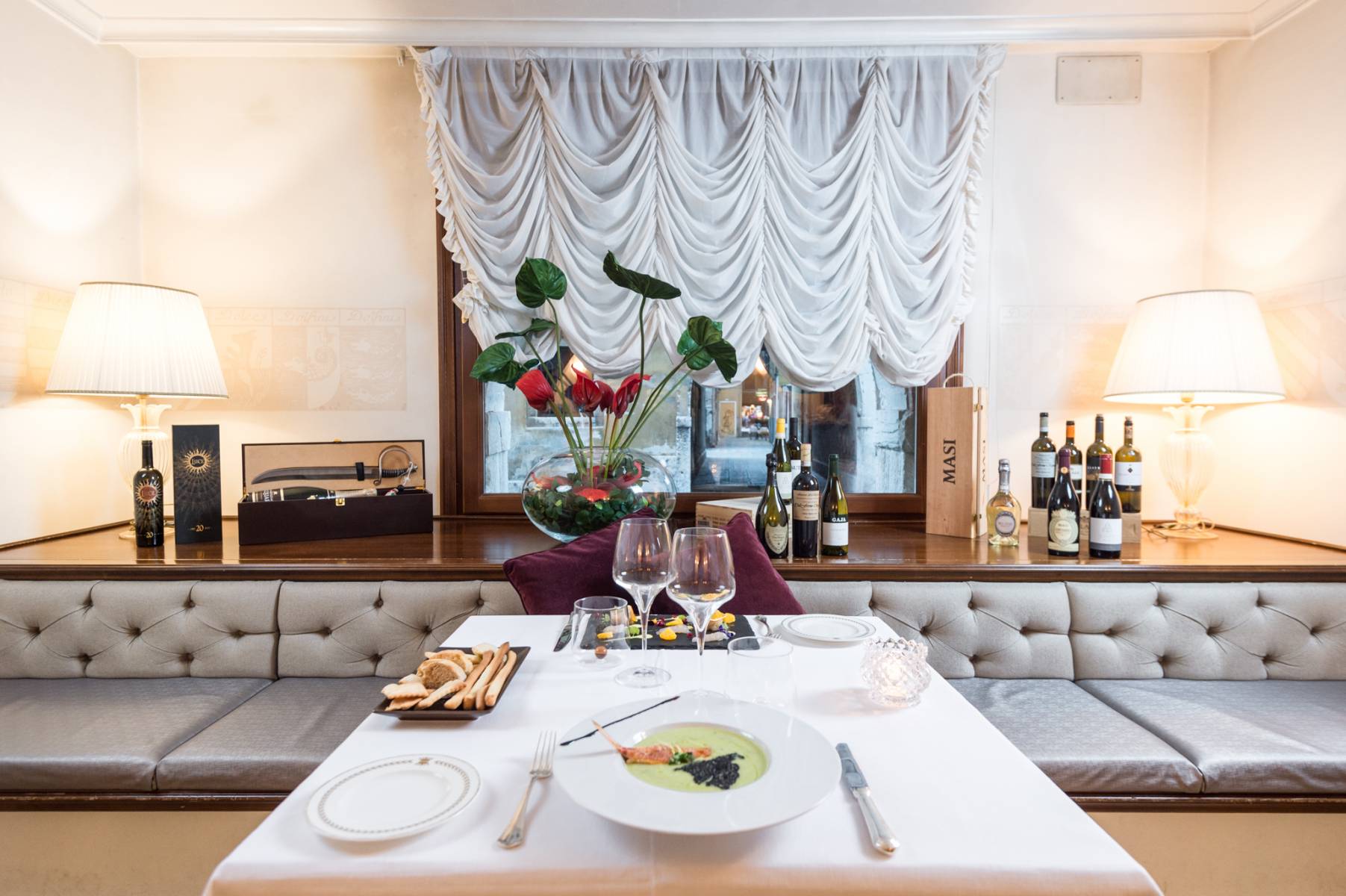 While many of
the individual items, like grilled scallops on an
aubergine puree and a duck breast with thyme,
apples, foie gras and dried fruit, sounded
appealing, we chose a fixed price six-course,
artistically presented seafood menu ($96 per
person) consisting of a thick cut of raw marinated
sea bass served with a heady pesto
sauce; a salad of velvety prawns and ripe peaches;
cold nuggets of bacalà
cod accompanied by a spicy guacamole and a lime
mayonnaise; burrata-stuffed ravioli adrift on a
garlic-laced scampi sauce; fillets of ombrina
(a drum similar in consistency to snapper and in
taste to swordfish) dressed in a sauce of parsnip
cream and chicory; and a heavenly dessert of an
éclair topped with a sauce of pistachio and
caramel.
While many of
the individual items, like grilled scallops on an
aubergine puree and a duck breast with thyme,
apples, foie gras and dried fruit, sounded
appealing, we chose a fixed price six-course,
artistically presented seafood menu ($96 per
person) consisting of a thick cut of raw marinated
sea bass served with a heady pesto
sauce; a salad of velvety prawns and ripe peaches;
cold nuggets of bacalà
cod accompanied by a spicy guacamole and a lime
mayonnaise; burrata-stuffed ravioli adrift on a
garlic-laced scampi sauce; fillets of ombrina
(a drum similar in consistency to snapper and in
taste to swordfish) dressed in a sauce of parsnip
cream and chicory; and a heavenly dessert of an
éclair topped with a sauce of pistachio and
caramel.
From one of the best wine lists in Venice,
we accompanied the meal with a light 2015 Ca’
Rugate Valpolicella Ripasso that had flavors of
ripe plums and raspberries and mated quite well
with all the fare.
Open daily for lunch and dinner. Expect an À
la carte dinner for two to cost $140-$150,
or $96
per person for a fixed price menu, both
excluding wine.
Acquastanca
Osteria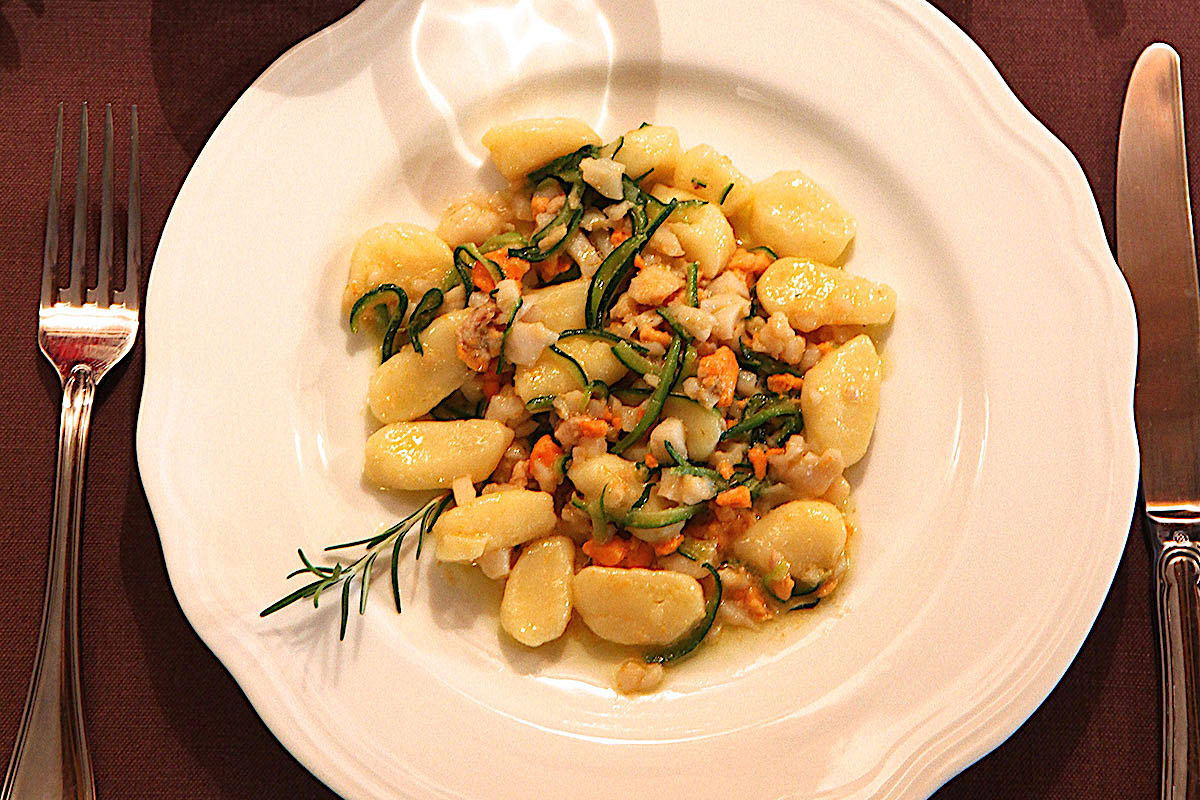
Fondamento
Manin 48, Murano
39-041-3195125
Highly
recommended
by locals, this Murano lunch spot—not overrun by
tourists—offers a brief menu of well-prepared
traditional northern Italian fare in a well-lit
room with a bar down one side and a wood paneled
ceiling. The name Acquastanca is navy slang for
the calm point of the tide between the ebb and
flow. The
restaurant was opened in 2012 by Giovanna
Arcangeli and Caterina 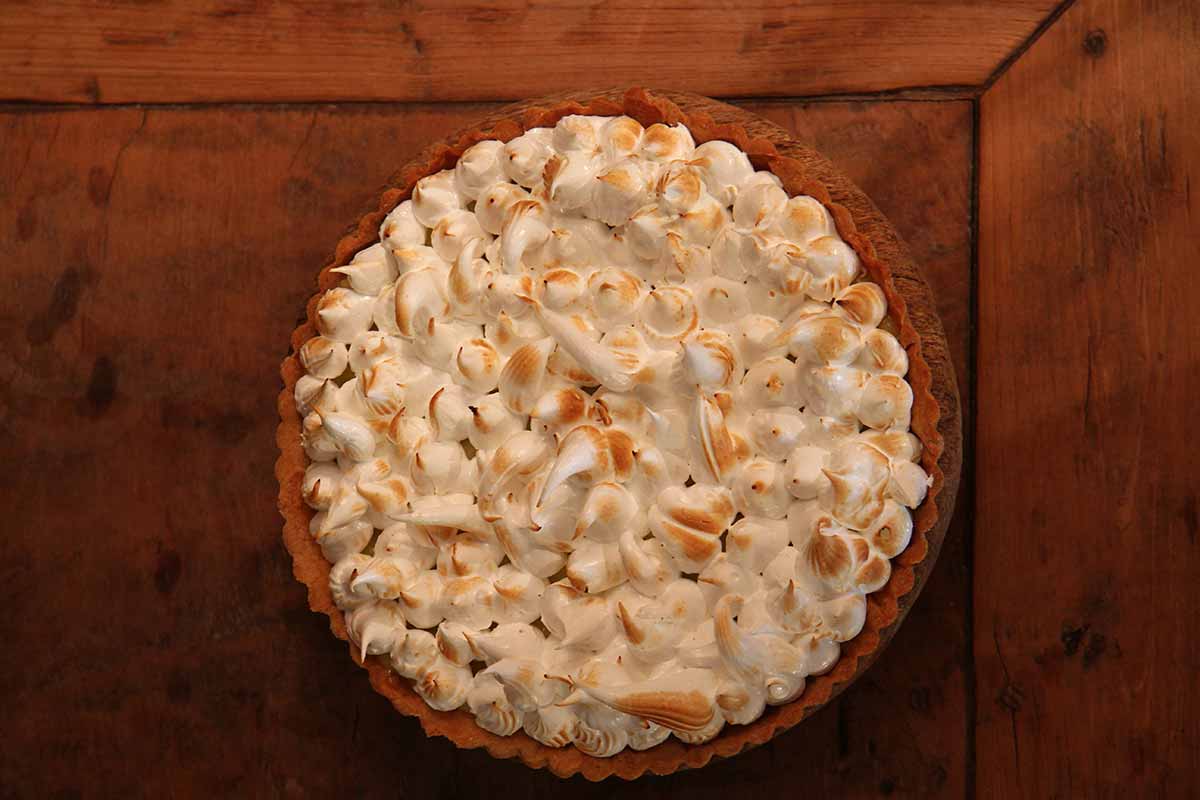 Nason, who grew up
Murano. Appetizers range from a sweet Parma ham
and melon to dewy, grilled sea scallops with green
asparagus to a classic Caprese with fresh buffalo
mozzarella.
Nason, who grew up
Murano. Appetizers range from a sweet Parma ham
and melon to dewy, grilled sea scallops with green
asparagus to a classic Caprese with fresh buffalo
mozzarella.
From a list of five pastas we chose an
order of al dente tagliolini served with a briny mix
of squid in their ink. Main courses run the gamut
from grilled octopus with chickpeas and a chicory
puree to a classic veal piccata
and green beans. And there’s a choice of five
desserts: peaches and cream, coffee mousse with
almond crumble, biscuits with mascarpone cream and
of course tiramisù.
We accompanied our meal with glasses of a lively
Veneto prosecco.
Open 10 a.m.
– 4 p.m. Monday – Saturday and for dinner on
Friday. Expect lunch for two to cost $90-$100,
excluding wine.
❖❖❖
By John Mariani
LAUT SINGAPURA
31 East 20th
Street (near Fifth Avenue)
212-674-5288
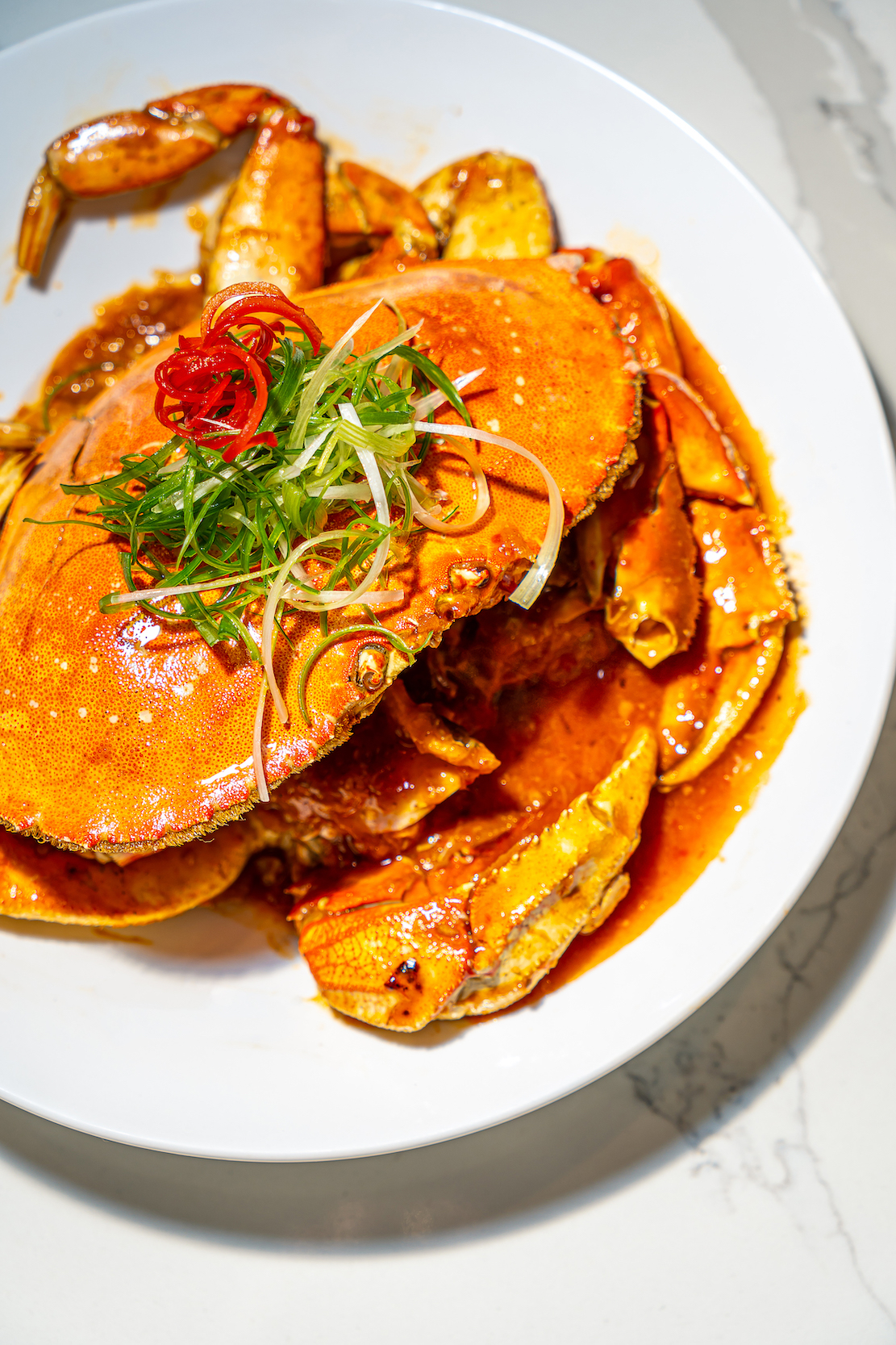
I have never been to
Singapore so I have no pre-conceived notions
about a food culture that embraces several 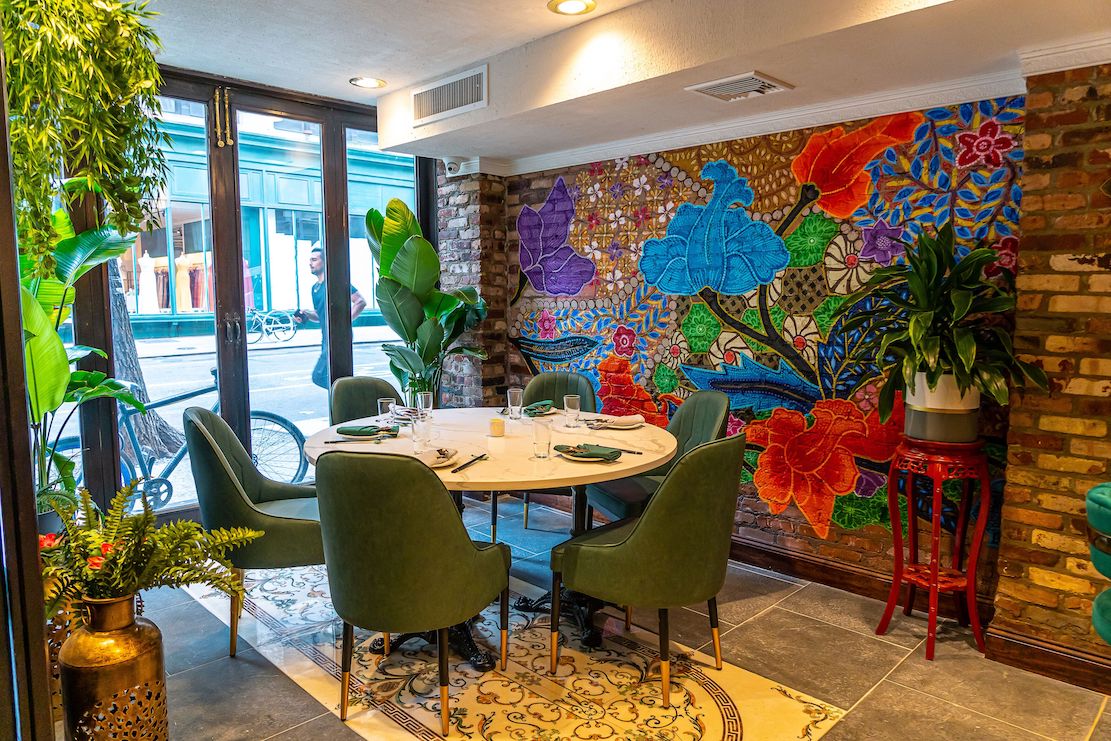 Asian nations, including China,
Thailand, Malaysia, Indonesia and India. I also
have not been to the first incarnation of Laut
near Union Square, which has a Michelin star,
whose menu is similar to Laut Singapura nearby
in the Gramercy neighborhood. Both
are part of the commitment of owner Salil Mehta
and his wife Stacey to bring authentic
Singaporean food in all its variety to New York.
They designed the 60-seat dining room with Asian
antiques, marble-topped tables, a royal blue
velvet banquette and skylight.
Asian nations, including China,
Thailand, Malaysia, Indonesia and India. I also
have not been to the first incarnation of Laut
near Union Square, which has a Michelin star,
whose menu is similar to Laut Singapura nearby
in the Gramercy neighborhood. Both
are part of the commitment of owner Salil Mehta
and his wife Stacey to bring authentic
Singaporean food in all its variety to New York.
They designed the 60-seat dining room with Asian
antiques, marble-topped tables, a royal blue
velvet banquette and skylight.
Salil likes nothing better than to explain
his food and why so many New York restaurants
adapt theirs to western palates. Engage him in a
conversation and you’ll learn a lot about Asian
cuisine and culture, including an introduction to
some powerful liquors not for the tame palate.
Salil stresses that his fare here is closer
to Singaporean street food. There are several
Indian roti
items on the menu (Indian 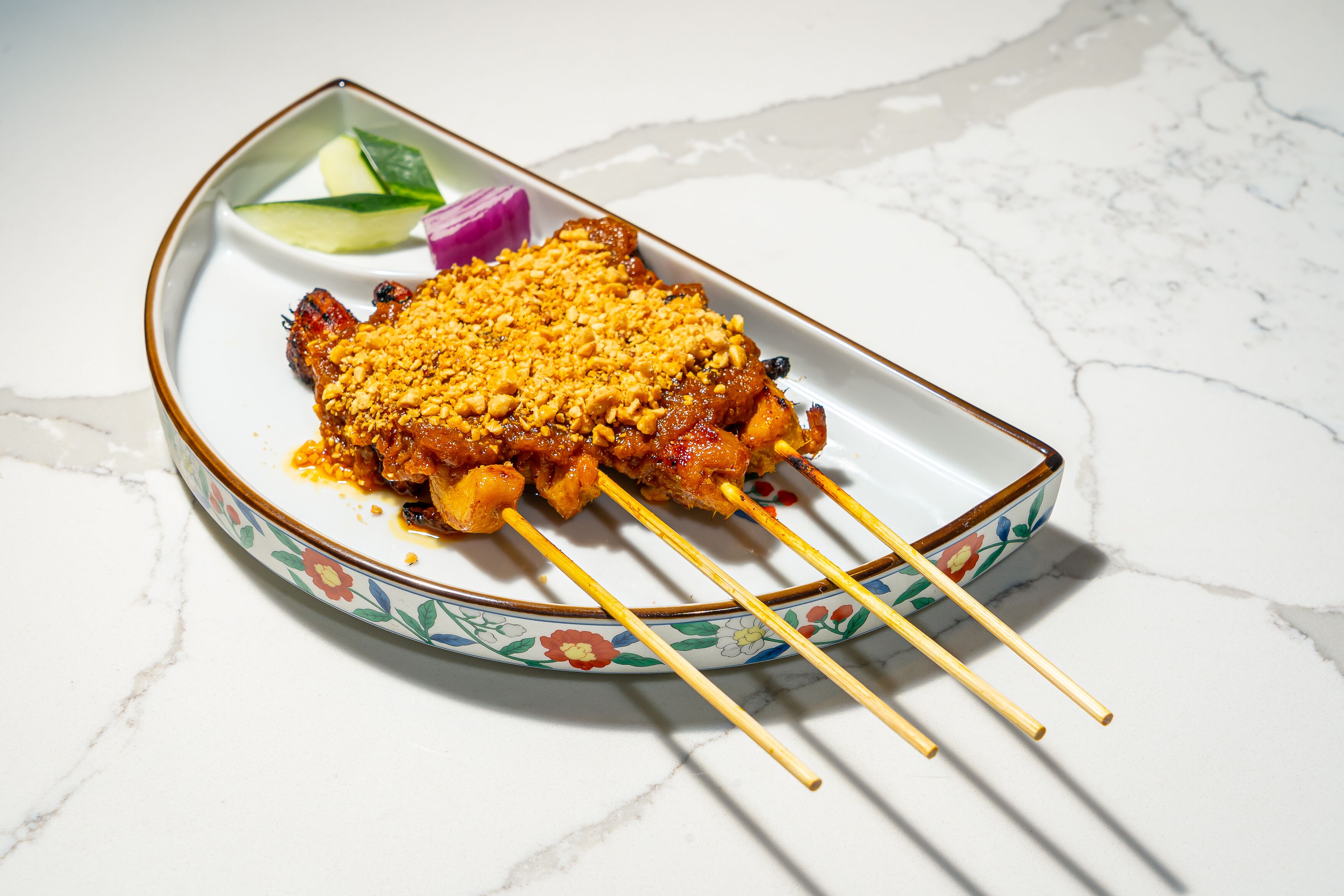 workers
popularized them in Durban, South Africa). We had
roti telur,
a pancake composed of egg, onion, chili and scallion with
an assertive curry dip ($12). There are also a few
satays (right). We had
a Singapore version with chicken and peanut sauce
($10), and there is a beef variety with
caramelized soy ($10).
workers
popularized them in Durban, South Africa). We had
roti telur,
a pancake composed of egg, onion, chili and scallion with
an assertive curry dip ($12). There are also a few
satays (right). We had
a Singapore version with chicken and peanut sauce
($10), and there is a beef variety with
caramelized soy ($10).
As you’d hope, there are pop-in-the-mouth
items like curry puffs filled with potatoes,
onions “and love” ($12), and steamed dumplings
($10). Mee
goring was a hearty Indonesian thin
noodle dish ($16) sautéed with sambal
chili paste, chive, bell pepper, onion and
scallion in a spicy shellfish broth that Salil
promised would be very hot and he was telling the
truth. Take a small sip and be ready with some
rice on the side.
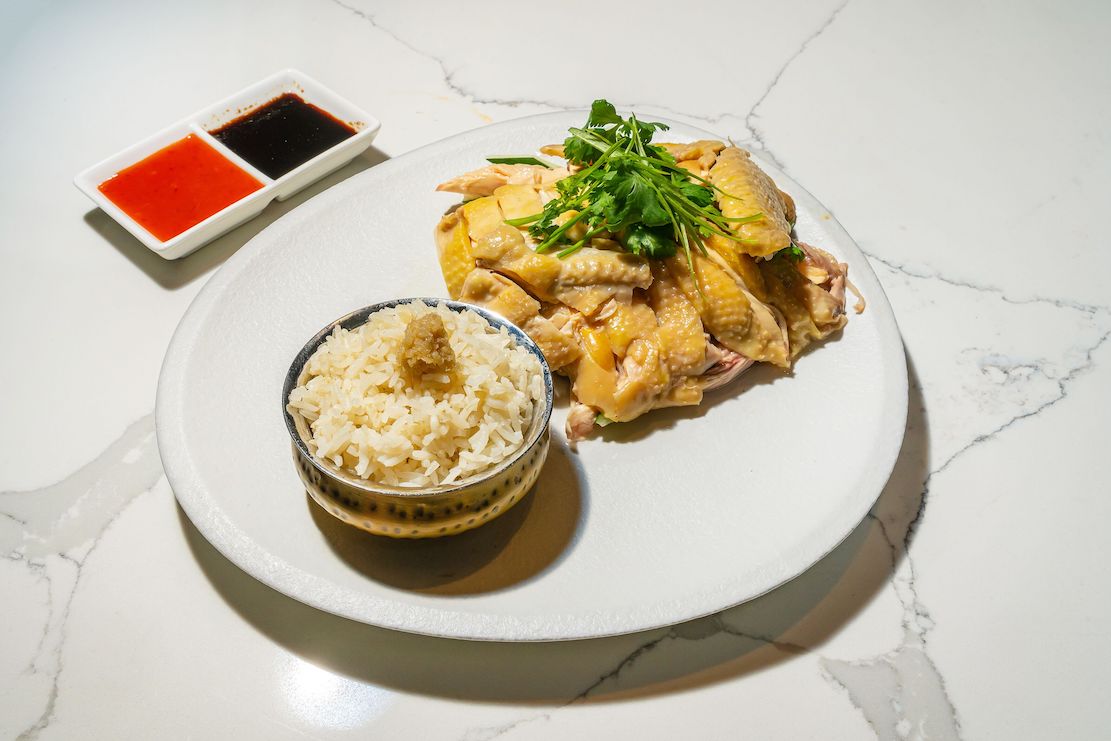 Hainanese
chicken
(below)
is a Southern Chinese comfort food that is
especially treasured in Singapore, something like
chicken and dumplings in America. It is fairly
mild, made from poached chicken,
stock, chili, garlic and shallot- infused soy with
rice. Salil suggested we try a dish called buah Keluak
fried rice, saying that buah keluak is a plant of poisonous
nuts that grows mostly in Indonesia and the nuts
need to be properly flushed with water or
fermented to be edible. I took a pass on that
one.
Hainanese
chicken
(below)
is a Southern Chinese comfort food that is
especially treasured in Singapore, something like
chicken and dumplings in America. It is fairly
mild, made from poached chicken,
stock, chili, garlic and shallot- infused soy with
rice. Salil suggested we try a dish called buah Keluak
fried rice, saying that buah keluak is a plant of poisonous
nuts that grows mostly in Indonesia and the nuts
need to be properly flushed with water or
fermented to be edible. I took a pass on that
one.
The star dish at Laut Singapura, as at his
other Laut restaurant, is the chili crab—called
Singapore’s national dish ($21) —which comes
red-orange and steaming to the table, its shell
cracked, sending wondrous aromas into the air. You
pick up a claw, crack it a bit more and dig or
suck out the abundant meat, which is suffused with
spices and served with a steamed bun. It’s one of
the most delectable dishes in Asian cuisine and
Laut does it very well.
For dessert there’s a pleasant and unusual
appam balik
($12) of sweet corn in a peanut pancake, but of
the durian sundae ($12) the menu warns “buyer
beware,” since the durian fruit can be
overwhelmingly malodorous. This dessert begins
like a pudding, but when you get to the bottom
there’s a puree of durian that, to this western
palate, tastes just awful and does indeed smell.
To each his own.
Laut Singapura has been open only six weeks
and has only had a wine and liquor license for
three, so the kitchen and service staff are still
trying to jibe and can for the time being be
excused of their lapses, which on my visit
included an interminable time to get our cocktails
and bringing desserts to the table while the
debris of the savory dishes was still all over the
table.
As Laut
Singapura improves each week there will be more
focus, but according to Salil the possibilities of
exhausting Singaporean street food is highly
unlikely. Next time I’ll keep the durian at arm’s
length but I’m eager to try whatever else Salil
wants to bring to my table.
Open daily from 8 AM to 9 PM.
❖❖❖
By John Mariani
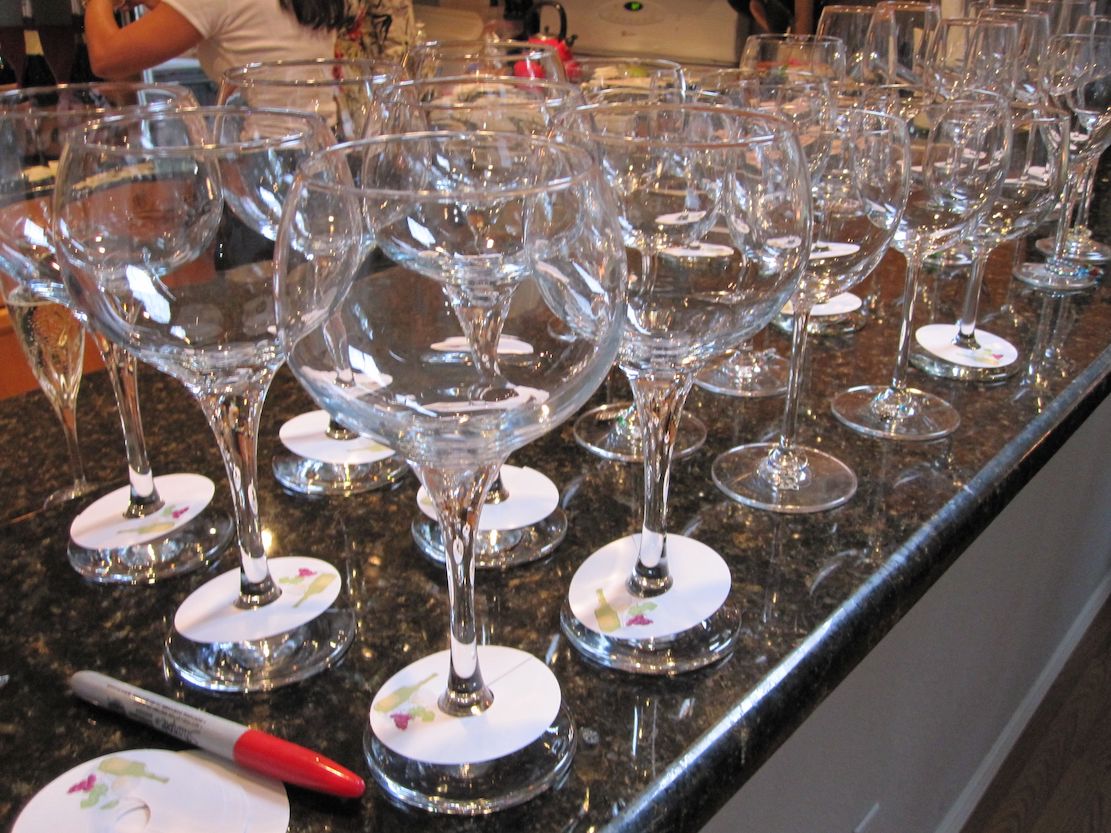
There are
two different forms of indefensible wine tastings:
One is drinking individual glasses of wines with a
long tasting menu in a restaurant; the other is
enduring a tasting—blind or not—of a dozen
or a score of wines in an antiseptic setting
without any food whatsoever. Count
me out of both.
 The very idea of wine
flights and long tastings makes my eyes glaze over
and my appetite flag for so many reasons. In the
first instance, let’s say you’ve chosen a chef’s
eclectic prix fixe menu of foie gras terrine with
pomegranates and hot piquillo peppers; followed by
halibut with cockles in a barigoule
flecked with chorizo; then a breast of duck with
dried cherries in a reduction of Port and ginger,
and finishing off with a dark chocolate cake with
an oozing chocolate center, topped with
raspberries and a gloss of balsamic vinegar—a mere
four courses.
The very idea of wine
flights and long tastings makes my eyes glaze over
and my appetite flag for so many reasons. In the
first instance, let’s say you’ve chosen a chef’s
eclectic prix fixe menu of foie gras terrine with
pomegranates and hot piquillo peppers; followed by
halibut with cockles in a barigoule
flecked with chorizo; then a breast of duck with
dried cherries in a reduction of Port and ginger,
and finishing off with a dark chocolate cake with
an oozing chocolate center, topped with
raspberries and a gloss of balsamic vinegar—a mere
four courses.
The inevitable choice of wines by a
sommelier to go with such foods is almost always
driven not by a reasonable match-up but by what
the sommelier says is “something quite unusual for
this course,” which might turn out to be a
Kimoto-style sake, followed by an Austrian
Grüner-Veltliner, a California Charbono and a
Canadian ice wine.
Imagine if this were a twelve-course meal,
which for most people is gluttonous excess and
good reason to have a designated driver. After
two or three courses can the palate be that
discerning as to how well such beverages go with
such involved recipes? Have you really learned
anything about the wines worth using at your next
dinner?
I also find that in these kinds of wine
flight meals the sommeliers inevitably pile on the
white wines and only get around to any interesting
reds as of the meat course. Thus, I
have had to sit through a seemingly endless parade
of dreary Austrian Gewürztraminers, Sicilian
Chardonnays, Sonoma Semillons, Hungarian Tokays
and South African Sauvignon Blancs that the
flashily sommelier finds quirky before getting to
a single red wine that might include a Brazilian
Merlot, an Emilian Lambrusco, and a 16% alcohol
Barossa Valley Cabernet Sauvignon. By which time,
I’m slumping under the table.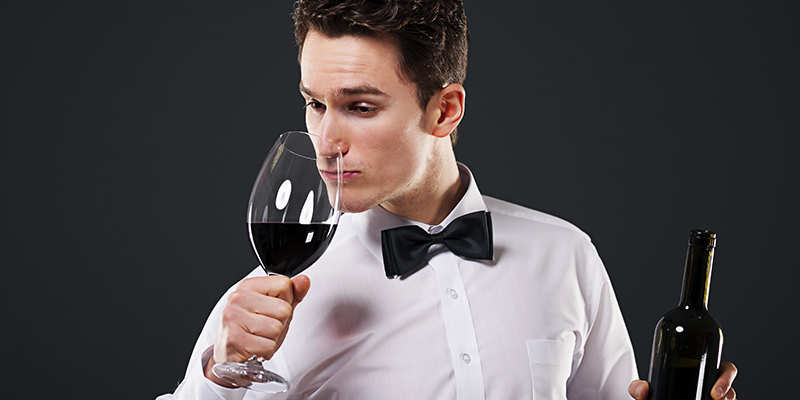
And
that’s
the thing of it. Tasting so many different wines
with so many foods cannot only be exhausting but
counterproductive.
And really not much fun. Two
wines for a meal seems to me perfectly rational;
much more is a path to tipsiness.
Still worse is the wine lover—and I include
some of my big name
professional colleagues—who insists he or
she can taste 50 wines or more in succession without
food and make sensible judgments on them, an
endurance gauntlet that ignores basic facts of
human physiology that makes so-called “palate
fatigue” is a real problem. Instead,
such tasters (and I’ve seen some of them conduct
these tastings while wearing white lab coats! See
photo of Frank Prial below) simply resort to a
slew of Winespeak adjectives that become more and
more abstruse after the first ten wines. The fact
is, if, say, a Chenin Blanc tastes like a Chenin
Blanc—one better than another—it is sheer folly to
try to break down components into the logorrhea of
piffling descriptors.
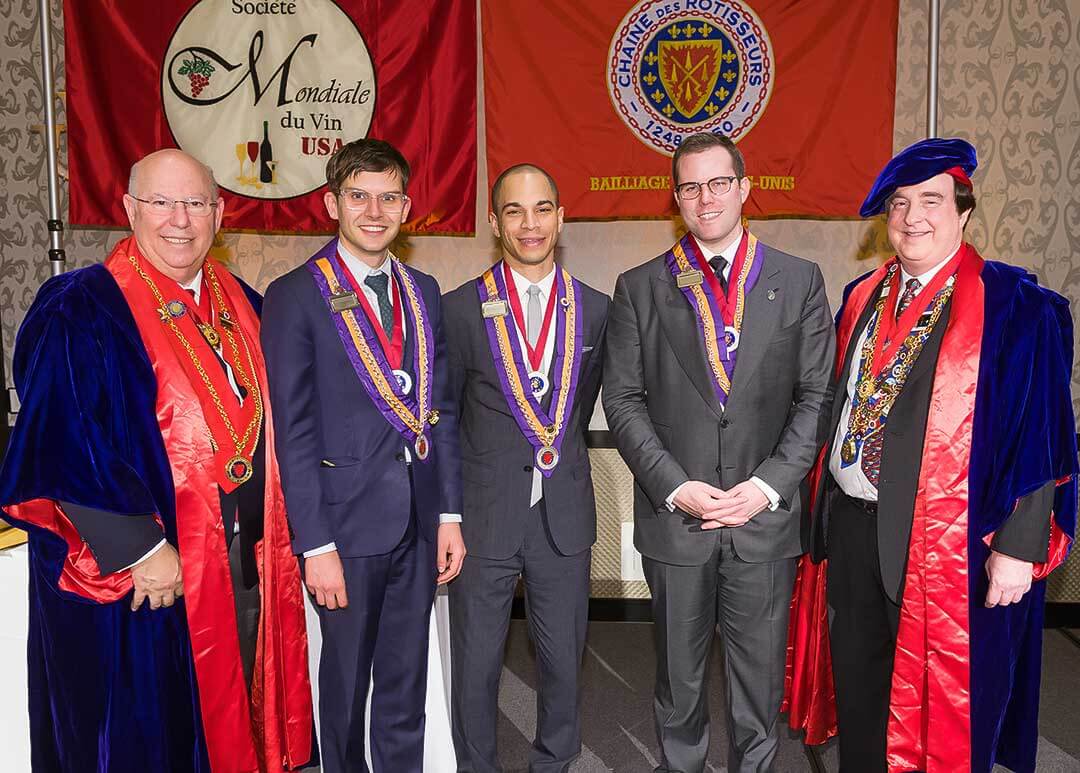 I’d
rather
stick needles in my eyes than listen to the wine
guy drone on about the “petroleum nose” in a Pinot
Gris, the
“blow your doors off” power of a Left Bank
Bordeaux, the “cigar box and chocolate” flavors of
a Santa Rosa Barbera and the “Chinese gooseberry
notes” in a Pinotage. When asked how he managed to
come up with such descriptions, the late New York
Times wine columnist Frank J. Prial (below)
shrugged and said, “Like everyone else, I fake
it.”
I’d
rather
stick needles in my eyes than listen to the wine
guy drone on about the “petroleum nose” in a Pinot
Gris, the
“blow your doors off” power of a Left Bank
Bordeaux, the “cigar box and chocolate” flavors of
a Santa Rosa Barbera and the “Chinese gooseberry
notes” in a Pinotage. When asked how he managed to
come up with such descriptions, the late New York
Times wine columnist Frank J. Prial (below)
shrugged and said, “Like everyone else, I fake
it.”
When I do
sample wines for professional assessment, I never
taste more than a half dozen of the same varietal,
and then I try
to re-taste them with simple foods, usually at
dinner time.
Thus, if I’m tasting, say, Chablis, I will
go through the various bottles, then have them
with a dinner of sautéed or broiled fish. If it’s
an array of Pinot Noirs, I might have roast lamb
and potatoes.
And if I want to get frisky, I may taste
them with food that has various spices, like North
African couscous or a garlicky soupe des
poissons. Then I might discover that
such-and-such a varietal, rather than an
individual wine, goes well with such foods and
feel good about advising my readers along those
general lines. Yep, Zinfandel goes pretty well
with Indian food. But beer goes better.
I
like to drink wine and eat food the way most
people do most of the time, that is, one or two
wines with a meal. I find the ritual of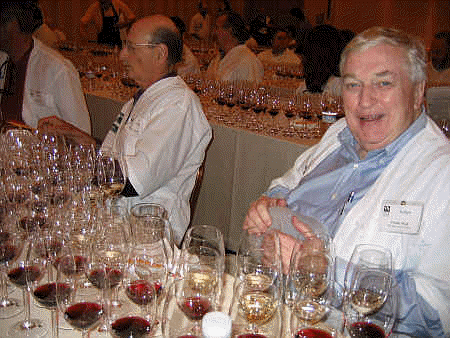 smelling,
sipping, commenting, smelling, sipping,
commenting, smelling, sipping, commenting onerous
while I’m trying to enjoy my dinner.
smelling,
sipping, commenting, smelling, sipping,
commenting, smelling, sipping, commenting onerous
while I’m trying to enjoy my dinner.
I am also of the belief, as are the
vignerons of European vineyards, that for the most
part their local wines go extremely well with
their local food, grown in the same soil. Which
is why, when in Tuscany, I drink Tuscan wines;
when in Napa Valley, I drink Napa Valley wines;
and when in Valencia, I drink Valençian wines. Do
I experiment? Not much, because there’s no need to
in a world of wines so diverse.
And here’s the naughty truth: No matter how
professional wine tasters insist that their
pronouncements and ratings of wine are based on
their exceptional and experienced palates, the
fact is that it is the easiest thing in the world
to switch the wines around and show how their
ratings change from their first impressions. I
can’t tell you how many winemakers and importers
confide (angrily) that the same exact wine under
different labels in a line-up might get an 87 or a
93 from the same exact tasters.
The
honest wine writers readily admit to fallibility.
British wine writer Harry Waugh was once asked
when was the last time he’d mistaken a Bordeaux
for a Burgundy. He replied, “What time was lunch
today?”
 AGGRAVATED
ASSAULT BY A HABITUAL IMBECILE
AGGRAVATED
ASSAULT BY A HABITUAL IMBECILEIn
Saginaw County, Michigan, 43-year-old Kurt Michael
Fulton (left)
was arrested after he allegedly hid cherry pies
underneath the parked cars of women drivers so he
could see them bend over and pick them up while he
watched from a distance with binoculars. The Sheriff
commented on Fulton's behavior, "It's very
creepy, unacceptable behavior. That's the best way
to describe it. It's just creepy." Fulton was
arrested and charged with aggravated stalking with a
habitual offender second offense enhancement as it
was discovered that Fulton had arrested for the same
crime in 2007.
FOOD WRITING 101: DON'T. RE. PEAT. YOUR. SELF

"There’s a lot of talk these days about
sustainable eating, slow food and social
responsibility when it comes to what we put on our
plates. A. Lot. Of. Talk. But then there are chefs
like James Beard Award-winning Alex Seidel (Mercantile
Dining & Provision, Fruition Restaurant) who
actually cook that talk."—Daliah Singer, "Chook Brings
Fine-Dining Finesse to a Fast-Casual Chicken Shop," Denver Post
(10/16)
Any of John Mariani's books below may be ordered from amazon.com.
 The Hound in Heaven
(21st Century Lion Books) is a novella, and
for anyone who loves dogs, Christmas, romance,
inspiration, even the supernatural, I hope you'll find
this to be a treasured favorite. The story
concerns how, after a New England teacher, his wife and
their two daughters adopt a stray puppy found in their
barn in northern Maine, their lives seem full of promise.
But when tragedy strikes, their wonderful dog Lazarus and
the spirit of Christmas are the only things that may bring
his master back from the edge of despair.
The Hound in Heaven
(21st Century Lion Books) is a novella, and
for anyone who loves dogs, Christmas, romance,
inspiration, even the supernatural, I hope you'll find
this to be a treasured favorite. The story
concerns how, after a New England teacher, his wife and
their two daughters adopt a stray puppy found in their
barn in northern Maine, their lives seem full of promise.
But when tragedy strikes, their wonderful dog Lazarus and
the spirit of Christmas are the only things that may bring
his master back from the edge of despair. WATCH THE VIDEO!
“What a huge surprise turn this story took! I was completely stunned! I truly enjoyed this book and its message.” – Actress Ali MacGraw
“He had me at Page One. The amount of heart, human insight, soul searching, and deft literary strength that John Mariani pours into this airtight novella is vertigo-inducing. Perhaps ‘wow’ would be the best comment.” – James Dalessandro, author of Bohemian Heart and 1906.
“John Mariani’s Hound in Heaven starts with a well-painted portrayal of an American family, along with the requisite dog. A surprise event flips the action of the novel and captures us for a voyage leading to a hopeful and heart-warming message. A page turning, one sitting read, it’s the perfect antidote for the winter and promotion of holiday celebration.” – Ann Pearlman, author of The Christmas Cookie Club and A Gift for my Sister.
“John Mariani’s concise, achingly beautiful novella pulls a literary rabbit out of a hat – a mash-up of the cosmic and the intimate, the tragic and the heart-warming – a Christmas tale for all ages, and all faiths. Read it to your children, read it to yourself… but read it. Early and often. Highly recommended.” – Jay Bonansinga, New York Times bestselling author of Pinkerton’s War, The Sinking of The Eastland, and The Walking Dead: The Road To Woodbury.
“Amazing things happen when you open your heart to an animal. The Hound in Heaven delivers a powerful story of healing that is forged in the spiritual relationship between a man and his best friend. The book brings a message of hope that can enrich our images of family, love, and loss.” – Dr. Barbara Royal, author of The Royal Treatment.
 |
The Encyclopedia of American Food and Drink by John F. Mariani (Bloomsbury USA, $35) Modesty forbids me to praise my own new book, but let me proudly say that it is an extensive revision of the 4th edition that appeared more than a decade ago, before locavores, molecular cuisine, modernist cuisine, the Food Network and so much more, now included. Word origins have been completely updated, as have per capita consumption and production stats. Most important, for the first time since publication in the 1980s, the book includes more than 100 biographies of Americans who have changed the way we cook, eat and drink -- from Fannie Farmer and Julia Child to Robert Mondavi and Thomas Keller. "This book is amazing! It has entries for everything from `abalone' to `zwieback,' plus more than 500 recipes for classic American dishes and drinks."--Devra First, The Boston Globe. "Much needed in any kitchen library."--Bon Appetit. |
"Eating Italian will never be the same after reading John Mariani's entertaining and savory gastronomical history of the cuisine of Italy and how it won over appetites worldwide. . . . This book is such a tasteful narrative that it will literally make you hungry for Italian food and arouse your appetite for gastronomical history."--Don Oldenburg, USA Today. "Italian
restaurants--some good, some glitzy--far
outnumber their French rivals. Many of
these establishments are zestfully described
in How Italian Food Conquered the World, an
entertaining and fact-filled chronicle by
food-and-wine correspondent John F.
Mariani."--Aram Bakshian Jr., Wall Street
Journal.
"Equal parts
history, sociology, gastronomy, and just
plain fun, How Italian Food Conquered the
World tells the captivating and delicious
story of the (let's face it) everybody's
favorite cuisine with clarity, verve and
more than one surprise."--Colman Andrews,
editorial director of The Daily
Meal.com. "A fantastic and fascinating
read, covering everything from the influence
of Venice's spice trade to the impact of
Italian immigrants in America and the
evolution of alta cucina. This book will
serve as a terrific resource to anyone
interested in the real story of Italian
food."--Mary Ann Esposito, host of PBS-TV's
Ciao
Italia. "John Mariani has written the
definitive history of how Italians won their
way into our hearts, minds, and
stomachs. It's a story of pleasure over
pomp and taste over technique."--Danny Meyer,
owner of NYC restaurants Union Square
Cafe, The Modern, and Maialino.
|
 |
 |
 |
 |
 |
 |
 |
 |
 Everett Potter's Travel Report:
Everett Potter's Travel Report: 
 Eating Las Vegas
JOHN CURTAS has been covering the Las Vegas
food and restaurant scene since 1995. He is
the co-author of EATING LAS VEGAS – The 50
Essential Restaurants (as well as
the author of the Eating Las Vegas web site: www.eatinglasvegas.
He can also be seen every Friday morning as
the “resident foodie” for Wake Up With the
Wagners on KSNV TV (NBC) Channel 3 in
Las Vegas.
Eating Las Vegas
JOHN CURTAS has been covering the Las Vegas
food and restaurant scene since 1995. He is
the co-author of EATING LAS VEGAS – The 50
Essential Restaurants (as well as
the author of the Eating Las Vegas web site: www.eatinglasvegas.
He can also be seen every Friday morning as
the “resident foodie” for Wake Up With the
Wagners on KSNV TV (NBC) Channel 3 in
Las Vegas.
MARIANI'S VIRTUAL GOURMET
NEWSLETTER is published weekly. Publisher: John Mariani. Editor: Walter Bagley. Contributing Writers: Christopher Mariani,
Robert Mariani, Misha Mariani, John A. Curtas, Gerry Dawes, Geoff Kalish,
and Brian Freedman. Contributing
Photographer: Galina Dargery. Technical
Advisor: Gerry
McLoughlin.
If you wish to subscribe to this
newsletter, please click here: http://www.johnmariani.com/subscribe/index.html
© copyright John Mariani 2019

